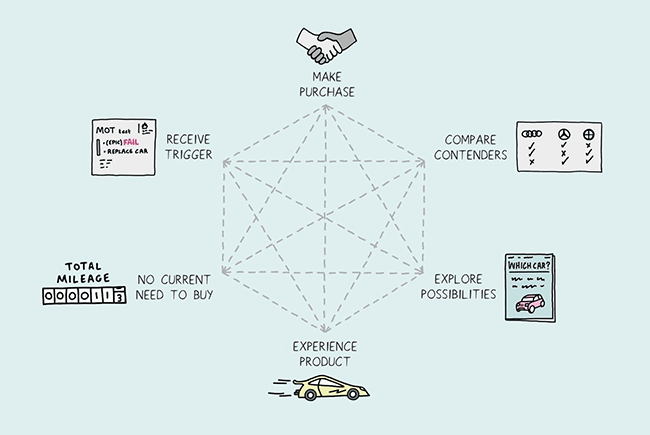Home
The Feed
Your selections:
A more realistic representation of the path to purchase | WARC | The Feed
The Feed
Read daily effectiveness insights and the latest marketing news, curated by WARC’s editors.
You didn’t return any results. Please clear your filters.

A more realistic representation of the path to purchase
Path to purchase models
Purchase behaviour
The Hankins Hexagon launched in February 2021 as a new model for explaining and optimising the path to purchase; writing for WARC, its creator James Hankins updates and refines his original idea, with applications for the CPG, automotive and finance sectors.
Why it matters
A metaphor to understand the customer journey is valuable, but the concept of a linear purchase funnel is outdated and inappropriate. The Hankins Hexagon presents a much needed and flexible model to analyse and optimise the path to purchase.
Takeaways
- In the model there are six stages, consisting of ‘no current need to buy’, trigger, explore possibilities, compare contenders, make purchase and experience product.
- The Hankins Hexagon allows for a person to make their own way to purchase via a variety of routes. There are very few fixed pathways in the model, and most are two-way with feedback loops and changes of mind.
- For different brands and different categories there is likely a dominant path to purchase within the model. Identifying these common pathways is key to increasing the probability of purchase.
Email this content
